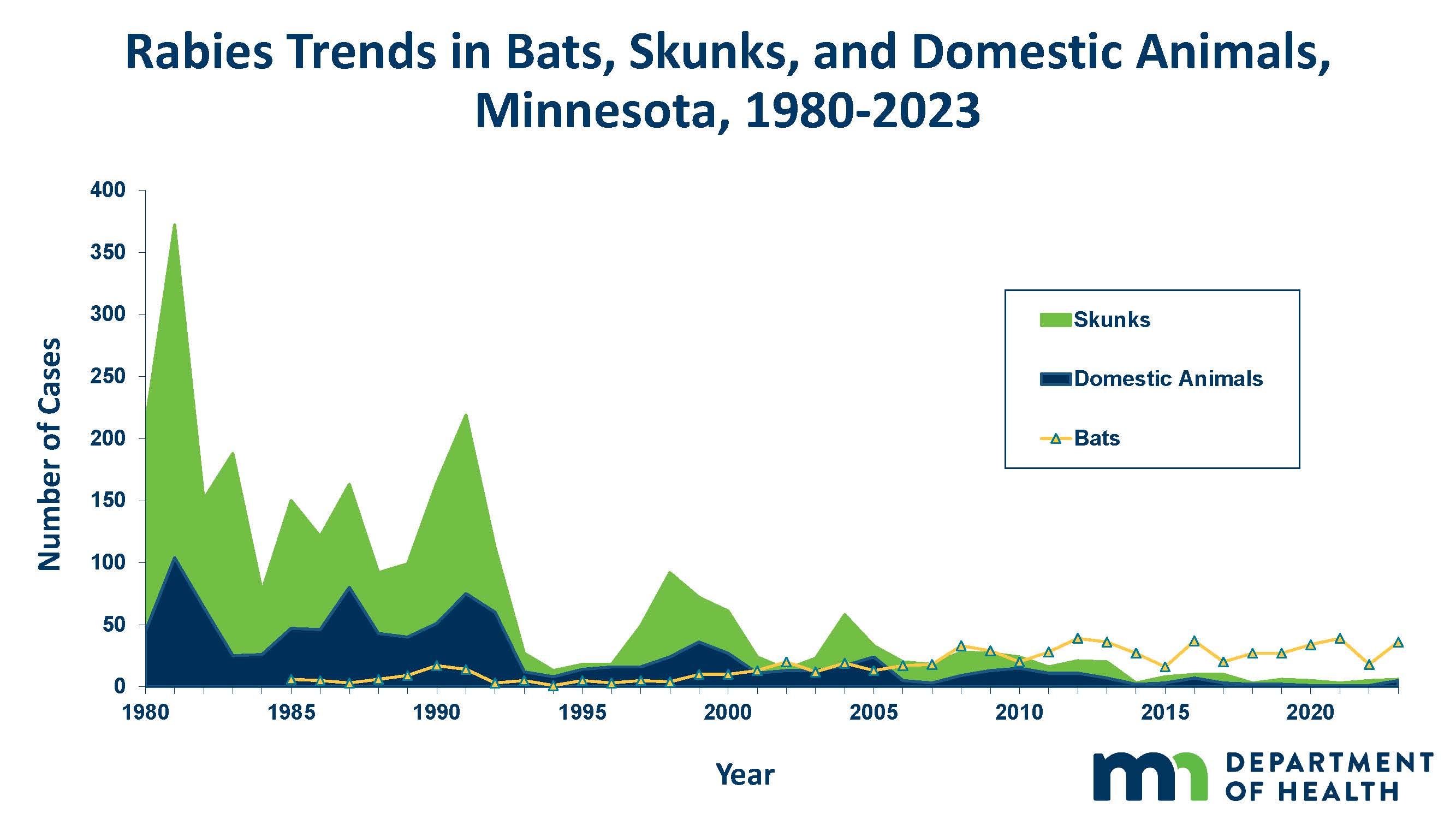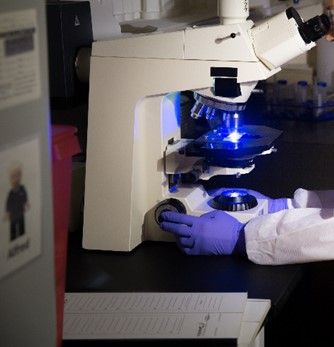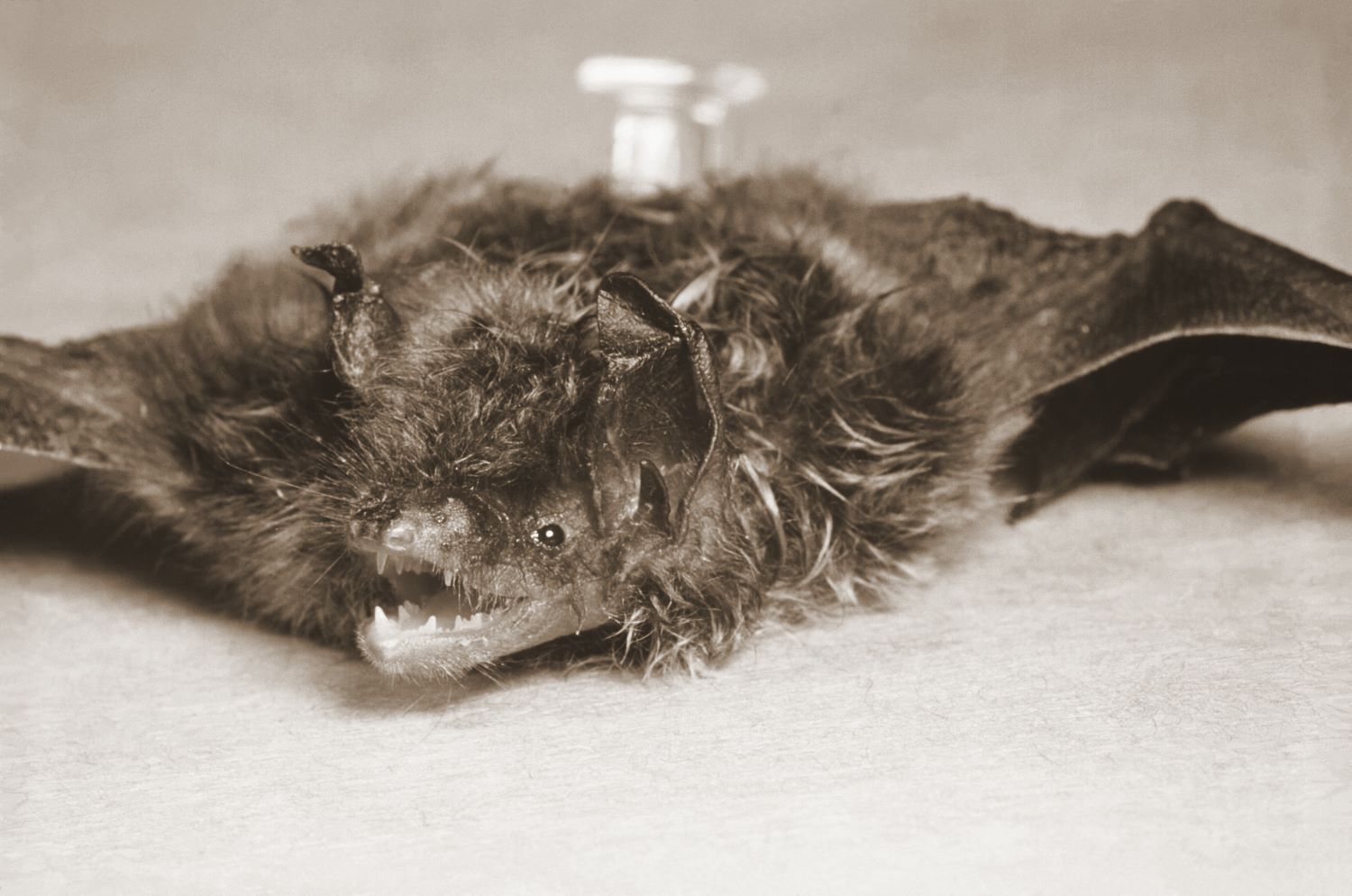2025 Public Health Laboratory Newsroom
In Minnesota, Only the Public Health Laboratory Tests for Rabies
 The Minnesota Public Health Laboratory is the only lab in the state that conducts rabies testing. Rabies has been on the decline since a peak in 1981, when 372 skunks and 104 domestic animals tested positive for the disease in Minnesota. In 2022, rabies was found in only 24 animals, most of which were bats. However, the number of animals testing positive for rabies rose in the last few years, to 48 in 2023 and 68 in 2024. (See more data at the Minnesota Department of Health’s Rabies Statistics page.) The Minnesota Public Health Laboratory is key to keeping this deadly disease under control.
The Minnesota Public Health Laboratory is the only lab in the state that conducts rabies testing. Rabies has been on the decline since a peak in 1981, when 372 skunks and 104 domestic animals tested positive for the disease in Minnesota. In 2022, rabies was found in only 24 animals, most of which were bats. However, the number of animals testing positive for rabies rose in the last few years, to 48 in 2023 and 68 in 2024. (See more data at the Minnesota Department of Health’s Rabies Statistics page.) The Minnesota Public Health Laboratory is key to keeping this deadly disease under control.
What is rabies?
Rabies is a fatal viral disease that affects the nervous system of animals. It is spread through the saliva of an infected animal, if it bites and pierces the skin of another animal or person. It is not spread through the air and cannot contaminate surfaces. Once symptoms of rabies appear, there is no treatment.
 However, before an infected person feels any symptoms, a vaccination can prevent rabies. Rabies treatment involves one dose of human rabies immune globulin (HRIG) and a series of four vaccinations. Anyone who has bitten by an animal should consult their doctor immediately. People can also call the Minnesota Department of Health hotline at 651-201-5414 to get expert advice related to animal bites and potential rabies exposures Monday through Friday from 8 a.m. to 4:30 p.m.
However, before an infected person feels any symptoms, a vaccination can prevent rabies. Rabies treatment involves one dose of human rabies immune globulin (HRIG) and a series of four vaccinations. Anyone who has bitten by an animal should consult their doctor immediately. People can also call the Minnesota Department of Health hotline at 651-201-5414 to get expert advice related to animal bites and potential rabies exposures Monday through Friday from 8 a.m. to 4:30 p.m.
For the past 15 years, bats have been responsible for the majority of human rabies cases in the United States. If you suspect you have been bitten by a bat, you should capture the bat and send it to the Minnesota Veterinary Diagnostic Laboratory on the University of Minnesota’s St. Paul campus. There, specialists will remove the brain and brain stem from the bat and send them to the Minnesota Public Health Laboratory for testing. (Read more about rabies, including how to capture a bat, at the Minnesota Department of Health’s Rabies section.)
Testing for rabies
The standard method for rabies testing, the direct fluorescent antibody (DFA) test, was established in 1958. Scientists flood a sample of the animal’s brain tissue with a specific antibody that has a fluorescent tag. This antibody bonds to the antigen, usually a protein, that proliferates in rabies-infected tissue. Then scientists use a microscope to examine the sample. If they see enough bright green fluorescence in the sample, they diagnose the animal with rabies.
 The Centers for Disease Control and Prevention (CDC) plans to promote a new molecular test for rabies that should be more precise. The molecular test uses polymerase chain reaction (PCR) technology to search for the RNA of the rabies virus. An advantage of the molecular test is that it can work with samples that are in poor condition.
The Centers for Disease Control and Prevention (CDC) plans to promote a new molecular test for rabies that should be more precise. The molecular test uses polymerase chain reaction (PCR) technology to search for the RNA of the rabies virus. An advantage of the molecular test is that it can work with samples that are in poor condition.
For 14 years, the Minnesota Public Health Laboratory has been using the molecular test for surveillance of the rabies virus. Surveillance of a virus involves tracking its variants over time and how they change. This is vital for keeping vaccines up-to-date and effective. When the new molecular test for rabies is verified for use in the United States, the Minnesota Public Health Laboratory is fully prepared to switch to the more accurate method.
How rabies transmission has changed
In Minnesota, skunks were major carriers of the rabies virus throughout the 1980s and early 1990s. The number of skunks with confirmed rabies cases was regularly above 100 annually, exceeding 200 in 1981 and 1991. Skunks would bite domestic animals – dogs, cats, cows, horses, etc. – and pass the virus to them.
Since 2010, the Minnesota Department of Health has not confirmed more than 14 infected skunks in any single year. The number of cases in domestic animals has seen a corresponding drop. (See Rabies Statistics for more details.)
As with most public health successes, there is no single reason for this decline. One factor is likely greater awareness of the dangers of rabies, especially among people in rural areas who are more likely to encounter skunks. It is also important to note that the data do not reflect a perfect sampling of the skunk population; only skunks that are sent in are tested. One factor could be that there are simply fewer people in rural areas who might come across rabid skunks.
 Bats have overtaken skunks as the main threat for contracting rabies in Minnesota. The number of bats confirmed to be infected with rabies in the state has ranged from 10 to 43 each year since 2010. Keeping rabies under control requires both the devoted work of the Minnesota Department of Health and widespread public knowledge of what to do if you suspect you have been bitten by a bat. Please visit the Rabies section of the Minnesota Department of Health website to learn more.
Bats have overtaken skunks as the main threat for contracting rabies in Minnesota. The number of bats confirmed to be infected with rabies in the state has ranged from 10 to 43 each year since 2010. Keeping rabies under control requires both the devoted work of the Minnesota Department of Health and widespread public knowledge of what to do if you suspect you have been bitten by a bat. Please visit the Rabies section of the Minnesota Department of Health website to learn more.
Return to the 2025 Public Health Laboratory Newsroom.